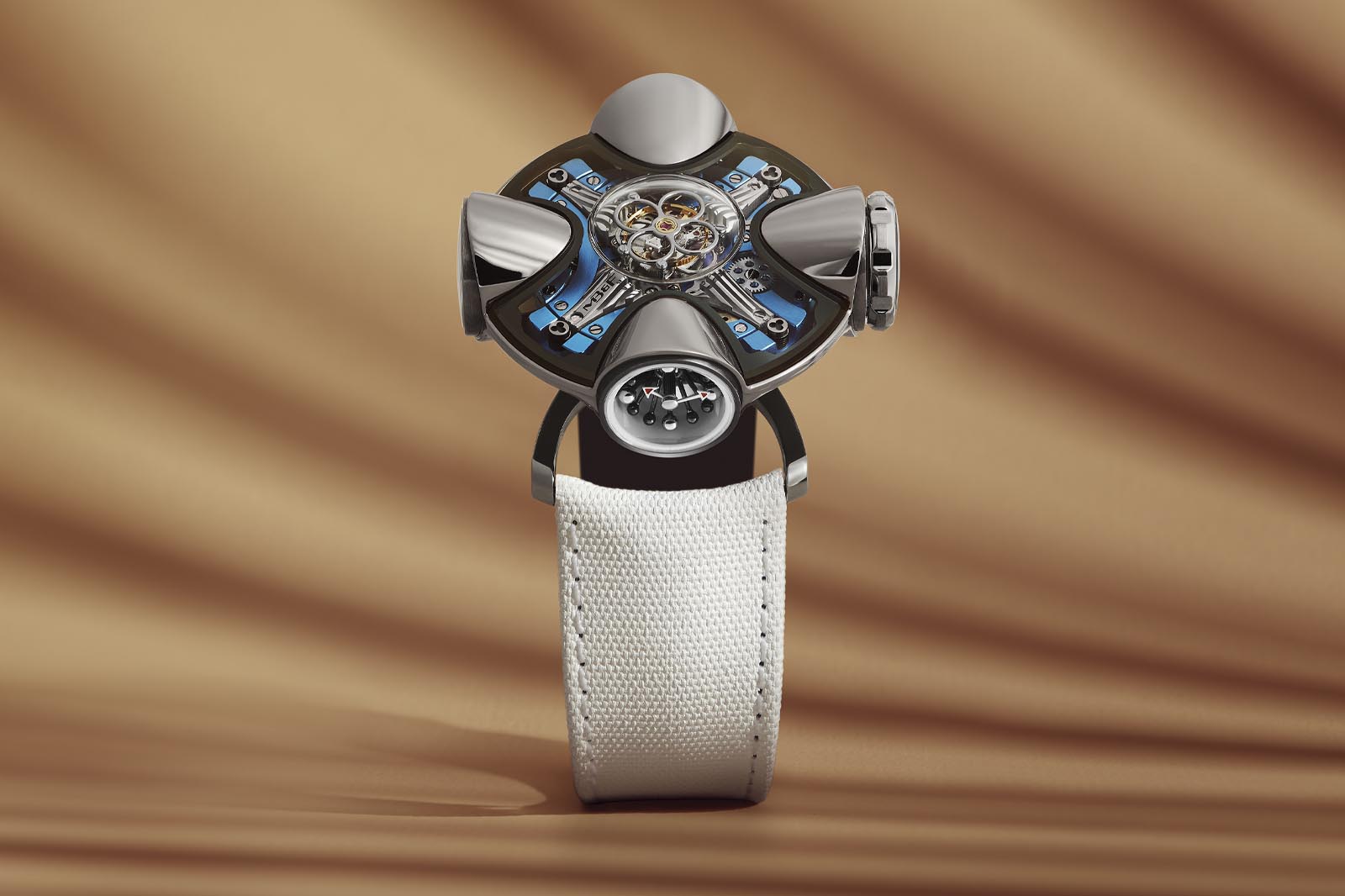
After it first surfaced as a concept design in 2018, the MB&F HM11 Architect is finally here as part of the MB&F main collection. After five years, I won’t blame you for not remembering the original concept, so let’s approach the HM11 as the new collection it is. The key to understanding this release is the fact that it’s a high concept piece inspired by Humanist and bubble house designs from the 1960s and 70s.
Le Palais Bulles, designed by Antti Lovag, estimated value: $400 million
Bubble houses were seen as a counter design movement in opposition to the growing popularity of brutalist and utilitarian designs that favoured speed of construction and simplicity. By focussing on circular shapes, bubble houses mirror the spherical area humans inhabit – the dual diameters of our height and arm-span. It’s design focussed on the human, rather than design focussed on how cheaply and quickly it can be erected.
The HM11 Architect then is a bubble house in wristwatch form. Organic shapes with compartmentalised zones dedicated to individual functions. The 42mm titanium case is split into five architectural areas, the central hub of corridors that centres around the flying tourbillon in the middle and then the four parabolic chambers around the edges that represent the rooms of the house.
If you were to tour this horological home, you’d start with the chamber that features a knurled edge with a sapphire glass window and the MB&F battle axe logo in centre. This entire section functions as the watch’s crown, allowing you to set the time. Because you use the crown to access the mechanisms inside a watch, it conceptually functions as the front door to the watch.
90 degrees to the left of the crown room is the main time display. It consists of red hour and minute hands with a 12-hour display represented by a series of orbs. There are large aluminium orbs at 12/3/6/9 and smaller titanium orbs for the intervening hours. (I must say, the whole bubble architecture and orb displays does make me think this watch belongs in the 1973 Woody Allen film Sleeper.)
90 degrees to the left of that, we find the HM11 Architect’s power reserve room (what house is complete without one of those?). This one features a single red hand and five orbs of increasing size that give an approximation of how much power reserve is left. The movement itself has a 96-hour power reserve and can be wound via two methods. It has an automatic rotor but is also wound by rotating the entire body of the watch while you’re wearing it.
Coincidentally this rotation also allows you to orientate the various displays so you can see the ones you want to without having to awkwardly twist your arm or take the watch off. It clicks into place in interval of 45 degrees, so you can have a single display facing you or stop it at a mid-point to see two displays at angles.
The final of the displays is without question the most unusual, a mechanical thermometer. It’s the thermostat for this small horological home. It uses a bimetallic strip mechanism attached to a hand to display the current temperature – fortunately this display features actual numerals (Celsius and Fahrenheit are both available) so you don’t have to estimate the temperature based on some orbs. The only other watch I can think of that features a heat sensing element is the Ressence Type 3BBB which measures its own internal oil temperature.
That concludes the tour, although there’s still more to talk about with the aesthetics of the piece. There are two colourways being produced for the initial release, each available in limited editions of 25-pieces. The first features a blue PVD coating on the skeletonised bridges that are visible through the sapphire glass while the second has 5N rose gold. In my opinion the blue edition feels more retro-futuristic while the golden version feels like a more serious horological piece.
While it is expensive, the HM11 Architect is more priced in line with a luxury car than an actual house at CHF 198,000 (approx. £178,500). Especially considering that the most famous bubble house, Le Palais Bulles designed by Antti Lovag, is approximately $400 million.
Price and Specs:
MB&F HM11 Architect
42mm diameter x 23mm thickness, grade 5 titanium, stainless steel conical rods, darker beads in polished titanium and lighter beads in polished aluminium
Blue or red gold dial plate
20m (2 bar)
MB&F three-dimensional horological engine featuring bevel gears, manual winding, 29 jewels, 364 parts
18,000 vph (2.5 Hz)
96h
Hours, minutes, power reserve indicator, temperature measurement (-20 to 60° Celsius, or 0 to 140° Fahrenheit)
White (blue) or khaki green (red gold) rubber with titanium buckle
CHF 198,000 (approx. £178,500), limited to 25 pieces each colourway
More details at MB&F.
Oracle Time